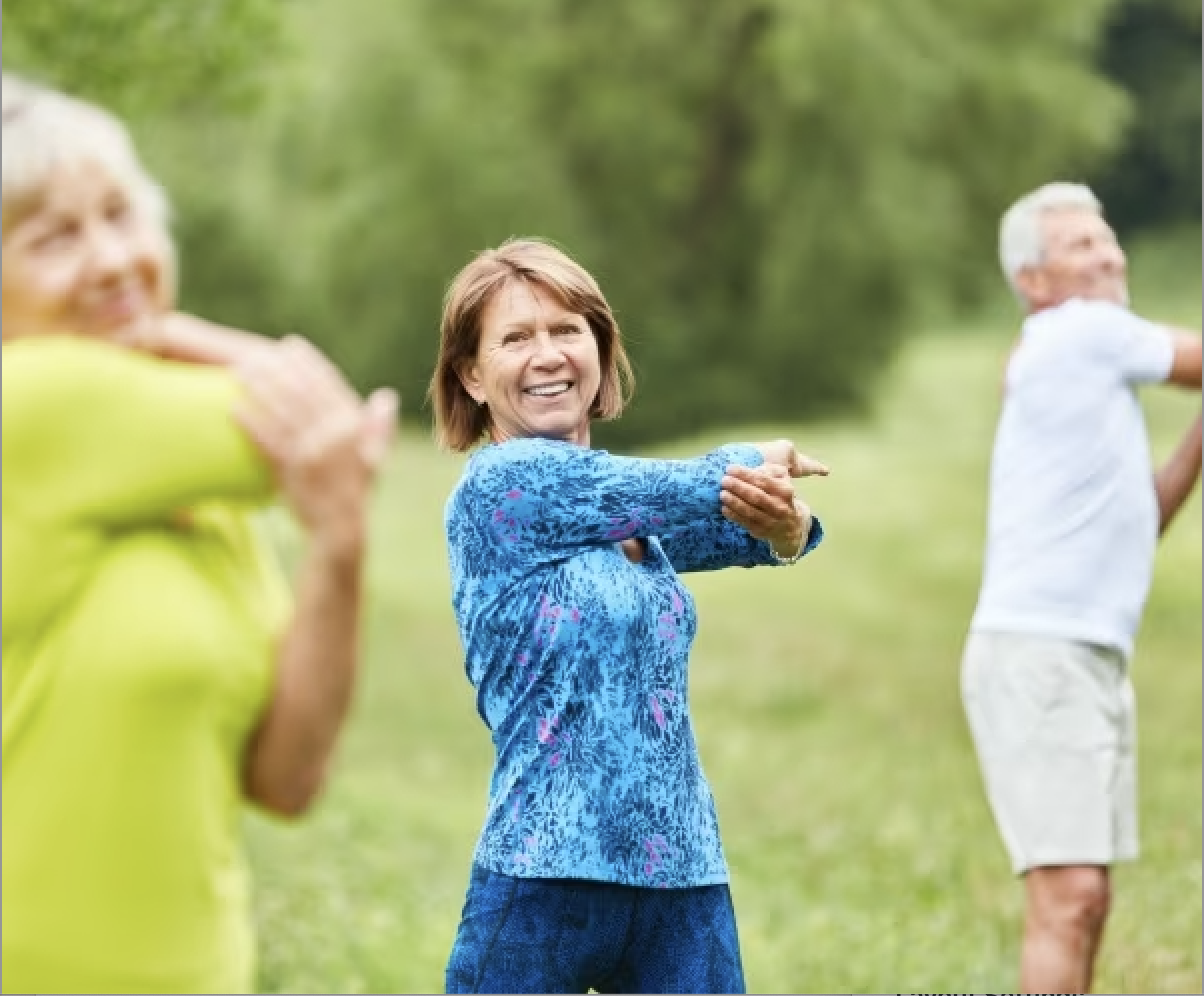Retain flexibility as you age

By Lynn Allison From Newsmax
Flexibility is important in everyday life, especially as we get older. It’s not about the ability to touch your toes or do a backbend, but about functional fitness. Bending down to put on your socks or tie your shoes. Looking over your shoulder to change lanes. Reaching up to get a box of cereal from the top shelf in the grocery store all require some degree of flexibility, according to The New York Times.
“Flexibility is pretty much a case of use it or lose it,” said Dan Van Zandt, a flexibility coach and educator. In time, with practice, we can increase our range of motion and increase our flexibility so we can squat a little deeper or reach a little higher.
How flexible you are and how flexible you can become are influenced by factors that you can’t control, says CNN. Women tend to be more flexible than men and age plays a role as well. Starting at age 30 or 40, flexibility continuously decreases, with men losing more flexibility than women. The good news is that research has found that regular stretching can increase flexibility in as little as four weeks.
Begin by testing your flexibility. A simple way is to stand and bend over with straight legs and try to touch your toes. If your fingers are in the general vicinity, chances are your lower back, hamstrings and hips have a fair amount of flexibility. If you can only reach your knees, you may have to work on these areas.
Test your neck flexibility by sitting on a chair and turning your head slowly to one side and then the other. Your chin should be able to reach to pretty much align with the shoulders. Our computer-driven lives tend to make our necks stiff and inflexible.
Doing the “figure four” on your back can assess the tightness of your hips. Lie down and place the left ankle over the right bent knee. Lift the right knee off the ground toward your chest. Reach with your hands to grasp the hamstring behind the right knee and pull it gently toward you. Repeat on the other side. If you can’t reach your hamstring with your hands, your hips may be tight.
Van Zandt suggests stretching each muscle group for five to 10 minutes weekly after warming up the body. You can use weights, resistance bands or any other piece of equipment to help increase the range of flexibility. For example, you can use a barbell on your shoulders when performing a squat to help stretch calves and ankles.
“The way you stretch is entirely up to you,” he says. “You can lift weights, you can stretch, you can do a combination of both.”
There are many classes at gyms or in community centers that can help address flexibility issues for all age groups. Meredith Hootstein, a registered yoga teacher from Boca Raton, Florida, teaches flexibility exercises to seniors using a chair.
“Chair yoga helps increase your range of motion safely,” she tells Newsmax. “For example, if you can’t touch your toes standing up, you can sit on a chair and bend forward to reach them. You can loosen up your neck and shoulders by sitting on a chair and raising one arm overhead while turning your head to the other side. Loosen the hips by placing your hands on each side of the chair and rotating your upper body slowly from side to side.”
Retest yourself from time to time to track improvements in flexibility, says CNN.
© 2023 Newsmax Health. All rights reserved.
For more on this story go to: NEWSMAX





